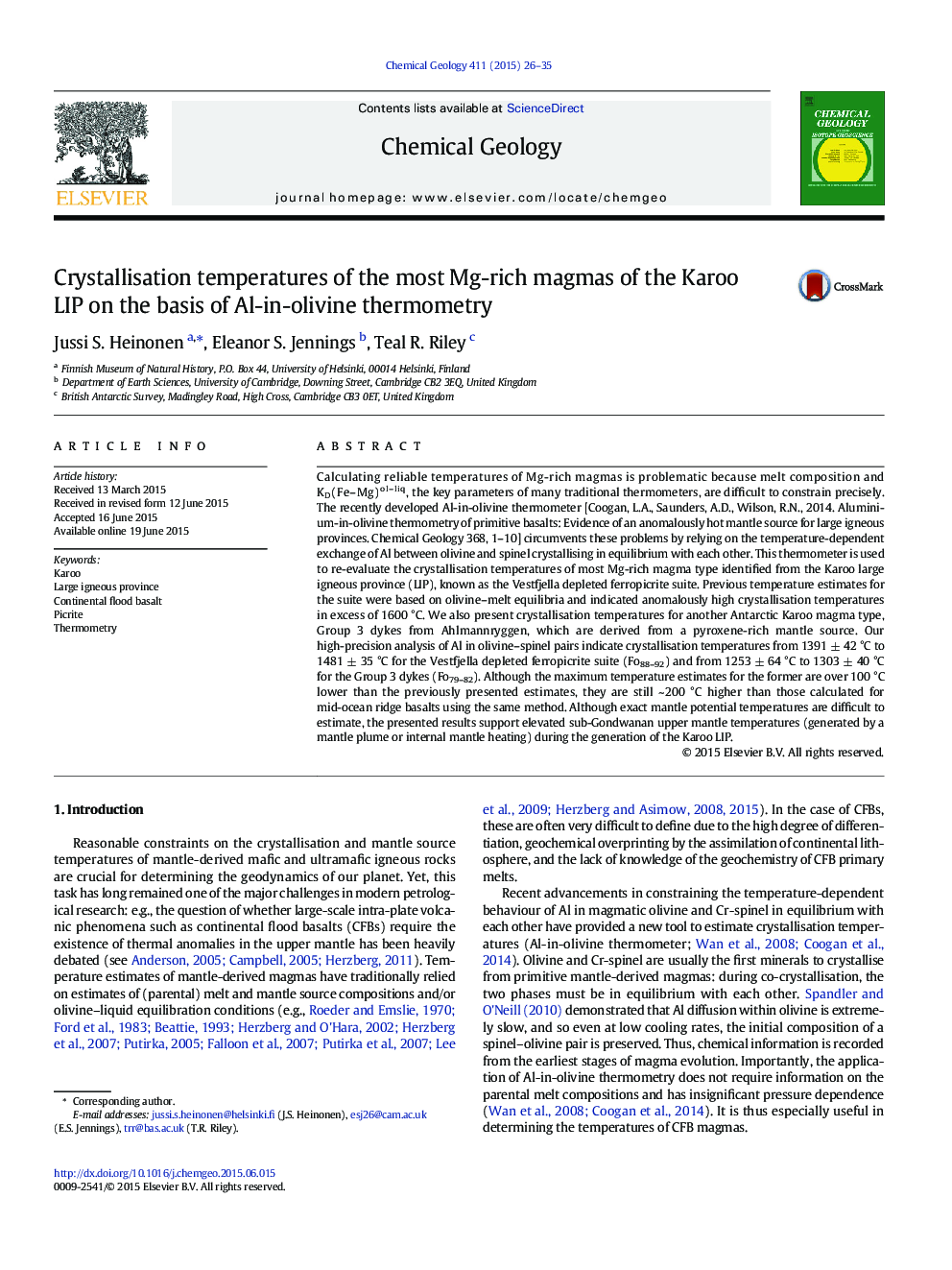| Article ID | Journal | Published Year | Pages | File Type |
|---|---|---|---|---|
| 6436310 | Chemical Geology | 2015 | 10 Pages |
â¢Re-evaluation of the crystallisation temperatures of the most Mg-rich magmas of the Karoo LIPâ¢Most primitive magmas crystallised at temperatures of 1400-1500 °Câ¢Sublithospheric sources of the Karoo LIP heated above ambient upper mantle temperatures
Calculating reliable temperatures of Mg-rich magmas is problematic because melt composition and KD(Fe-Mg)ol-liq, the key parameters of many traditional thermometers, are difficult to constrain precisely. The recently developed Al-in-olivine thermometer [Coogan, L.A., Saunders, A.D., Wilson, R.N., 2014. Aluminium-in-olivine thermometry of primitive basalts: Evidence of an anomalously hot mantle source for large igneous provinces. Chemical Geology 368, 1-10] circumvents these problems by relying on the temperature-dependent exchange of Al between olivine and spinel crystallising in equilibrium with each other. This thermometer is used to re-evaluate the crystallisation temperatures of most Mg-rich magma type identified from the Karoo large igneous province (LIP), known as the Vestfjella depleted ferropicrite suite. Previous temperature estimates for the suite were based on olivine-melt equilibria and indicated anomalously high crystallisation temperatures in excess of 1600 °C. We also present crystallisation temperatures for another Antarctic Karoo magma type, Group 3 dykes from Ahlmannryggen, which are derived from a pyroxene-rich mantle source. Our high-precision analysis of Al in olivine-spinel pairs indicate crystallisation temperatures from 1391 ± 42 °C to 1481 ± 35 °C for the Vestfjella depleted ferropicrite suite (Fo88-92) and from 1253 ± 64 °C to 1303 ± 40 °C for the Group 3 dykes (Fo79-82). Although the maximum temperature estimates for the former are over 100 °C lower than the previously presented estimates, they are still ~ 200 °C higher than those calculated for mid-ocean ridge basalts using the same method. Although exact mantle potential temperatures are difficult to estimate, the presented results support elevated sub-Gondwanan upper mantle temperatures (generated by a mantle plume or internal mantle heating) during the generation of the Karoo LIP.
